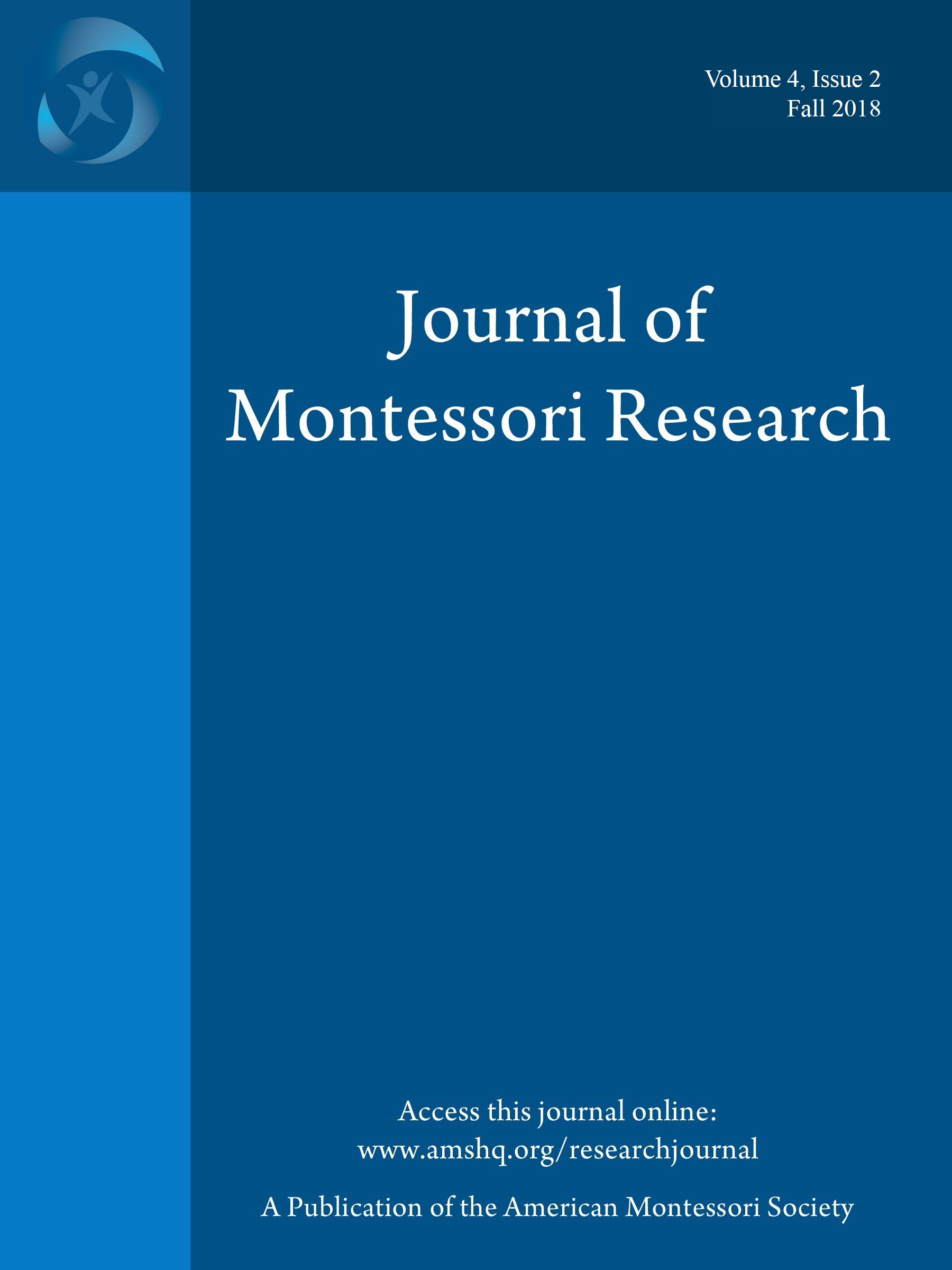Children’s preference for real activities: Even stronger in the Montessori Children’s House
DOI:
https://doi.org/10.17161/jomr.v4i2.7586Emneord (Nøkkelord):
children, Montessori, preschool, activities, preferences, pretend, realSammendrag
In the United States, children are often given the opportunity to engage in pretend activities; many believe this kind of play benefits children’s development. Recent research has shown, though, that when children ages 4 to 6 are given a choice to do the pretend or the real version of 9 different activities, they would prefer the real one. The reasons children gave for preferring real activities often concerned their appreciation of the functionality; when children did prefer pretend activities, their reasons often cited being afraid of, not allowed to, or unable to do the real activity. Given that children in Montessori classrooms have more experience performing real, functional activities, in this study we asked if this preference for real activities is even stronger among children in Montessori schools. We also asked children to explain their preferences. The data are from 116 3- to 6-year-old children (M = 59.63 months, SD = 12.08 months; 68 female): 62 not in Montessori schools and 54 in Montessori schools. Children explained their preferences for pretendand real versions of 9 different activities. Children in Montessori schools preferred real activities even more than did children in other preschools, but all children explained their choices in similar ways. The implications of these results are discussed with regard to play in preschool classrooms.


